What Does a Sales Enablement Manager Do? (And Why Your Team Needs One)
Sales teams today face more competition than ever. If you’re leading a business or managing sales professionals, you already know that every minute counts when it comes to winning deals and growing revenue. This is exactly why the role of a Sales Enablement Manager (SEM) has become so important. Let’s take a closer look at what these managers actually do and why your team might need one.
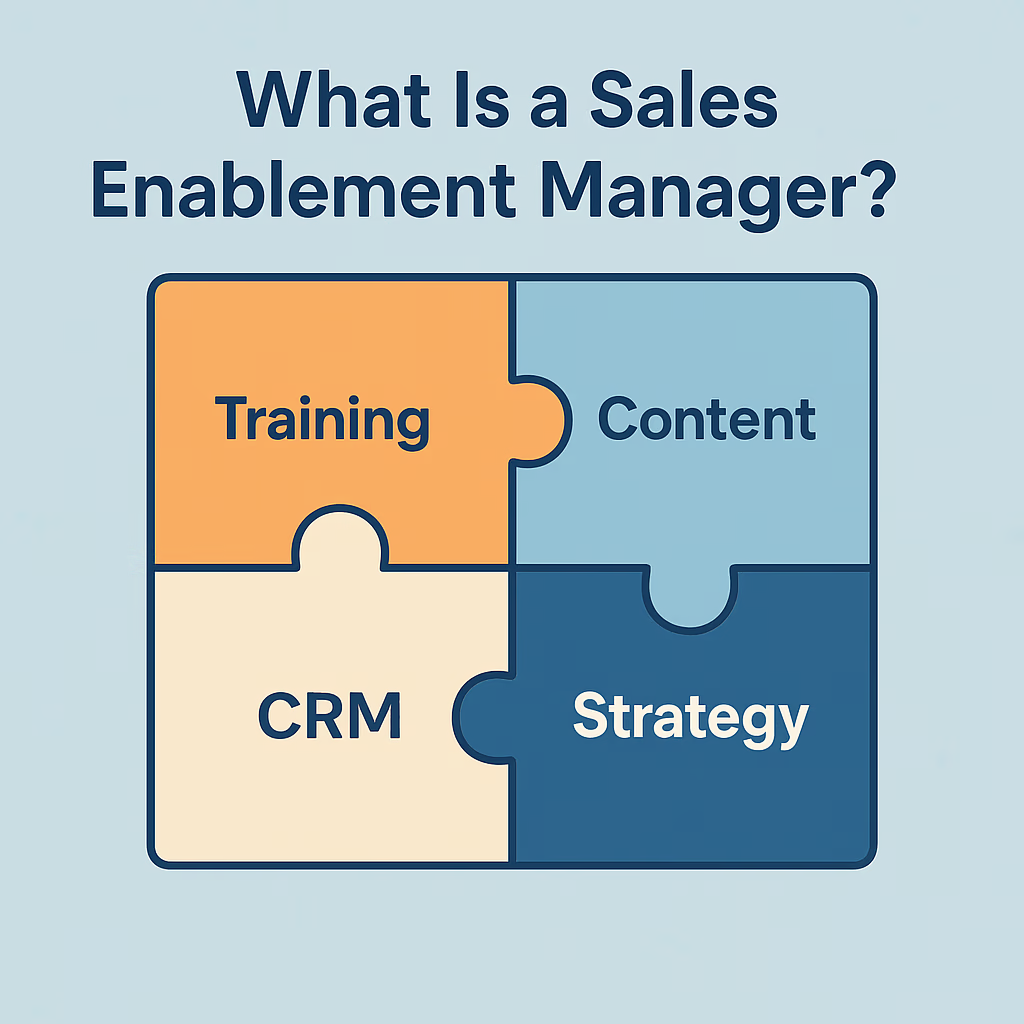
The four key components of a Sales Enablement Manager’s role
What Exactly is a Sales Enablement Manager?
A Sales Enablement Manager isn’t the same as your Sales Operations Manager or a Sales Development Rep. While those roles focus on managing sales tech or generating new leads, an SEM brings it all together-sales processes, training, technology, and even content-to help your team sell smarter and faster. Think of an SEM as your team’s coach, strategist, and support system rolled into one. They’re there to make sure your salespeople have everything they need to confidently engage customers and close deals effectively.
The Key Responsibilities of a Sales Enablement Manager
Here are some of the most important tasks your SEM will tackle:
- Creating Helpful Sales Resources: SEMs build practical resources like sales playbooks that clearly explain how to approach different selling situations. For example, if you’re launching a new product, an SEM might design training materials and scripts that equip your team to talk about it confidently.
- Training and Continuous Learning: Your SEM ensures everyone on your sales team-especially new hires-quickly gets up to speed and stays updated on products, trends, and effective selling techniques. Imagine cutting down the onboarding period for new sales hires from several weeks to just a few days-that’s the kind of impact an SEM can have.
- Aligning Sales and Marketing Content: An SEM collaborates closely with marketing and product teams to make sure sales reps have access to the right materials, such as case studies, customer testimonials, and pitch decks, precisely when they need them.
- Managing Sales Technology: From CRM systems like Salesforce to call-intelligence platforms and outreach tools, your SEM picks, implements, and manages technologies that make your salespeople more productive, not just busier.
- Tracking Performance and Optimizing Processes: SEMs analyze data to spot bottlenecks or areas where your team could improve. For instance, if deals are consistently stalling at a certain stage, your SEM digs into why and creates a targeted strategy to move things along.
- Improving Communication Across Teams: They bridge the gap between sales, marketing, and product teams, ensuring everyone is aligned and working towards the same business goals.
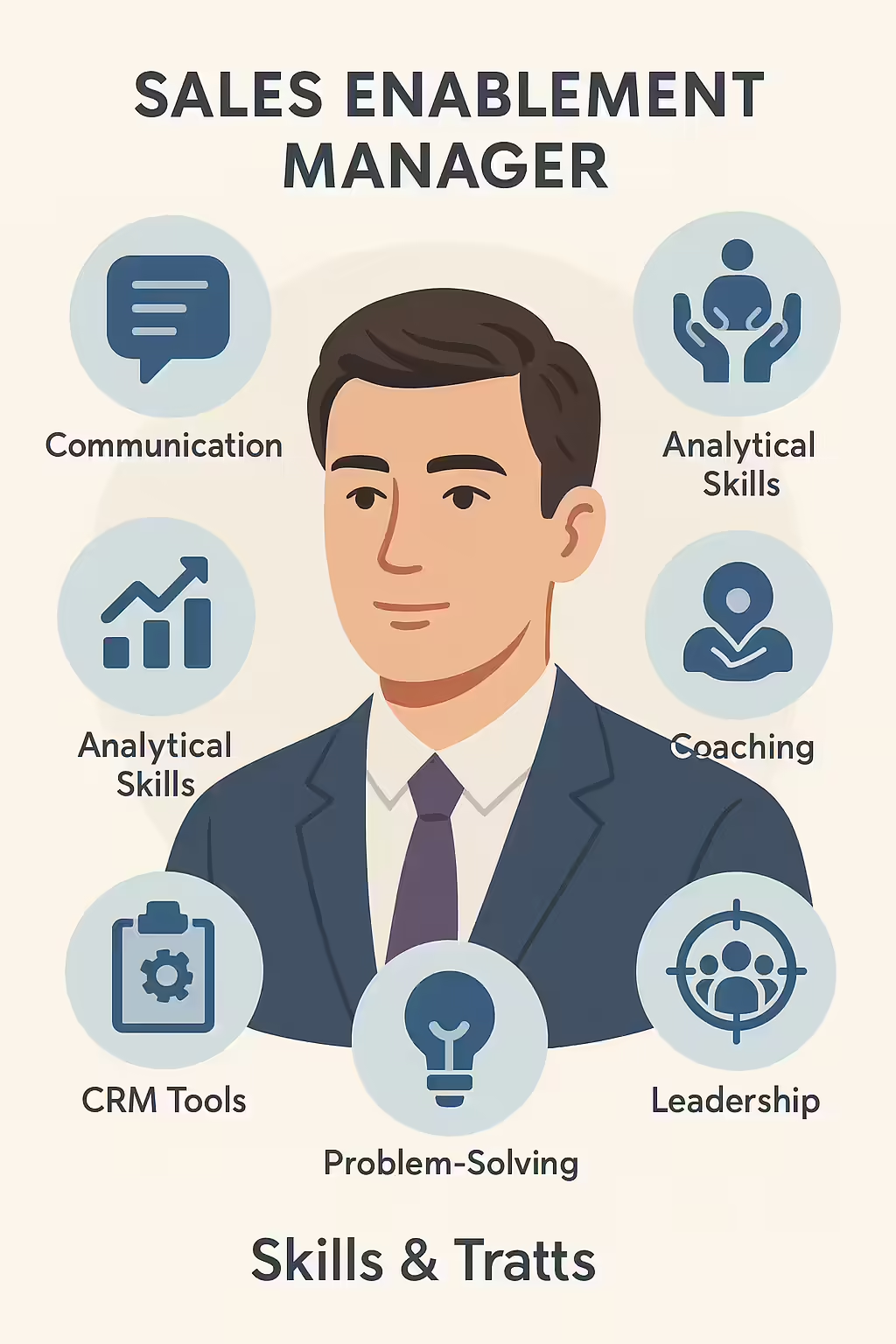
SEMs create comprehensive sales playbooks and lead effective training sessions
What Skills Does a Great Sales Enablement Manager Have?
A successful SEM typically has:
- Experience in sales or related fields, giving them insight into what frontline sellers need.
- Knowledge of sales tools and processes.
- Strong analytical skills to interpret sales data and identify trends.
- Excellent communication and leadership abilities to coach and motivate teams.
- Adaptability, since sales environments are always evolving.
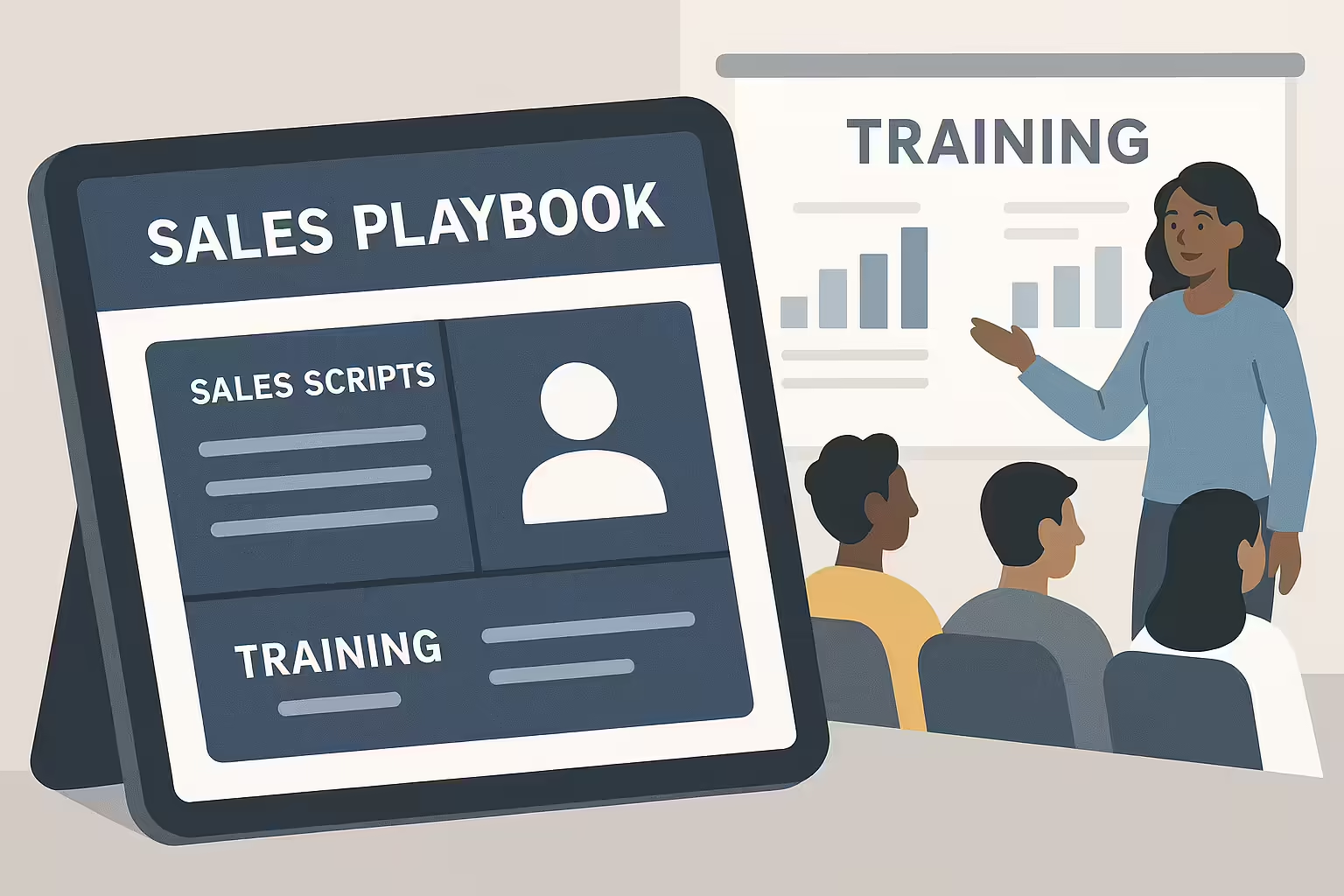
Essential skills and traits of an effective Sales Enablement Manager
Measuring the Impact of Sales Enablement
Wondering if hiring an SEM makes sense for your business? Here are some ways you’ll know they’re making a difference:
- Higher Win Rates and Bigger Deals: With the right training and resources, your salespeople close deals faster and more effectively.
- Shorter Sales Cycles: Better processes mean deals don’t get stuck in your pipeline.
- Quicker Ramp-Up for New Reps: New team members become productive sooner, directly impacting your bottom line.
- Improved Use of Sales Tools: Your investment in technology becomes more effective because your team actually uses it fully.
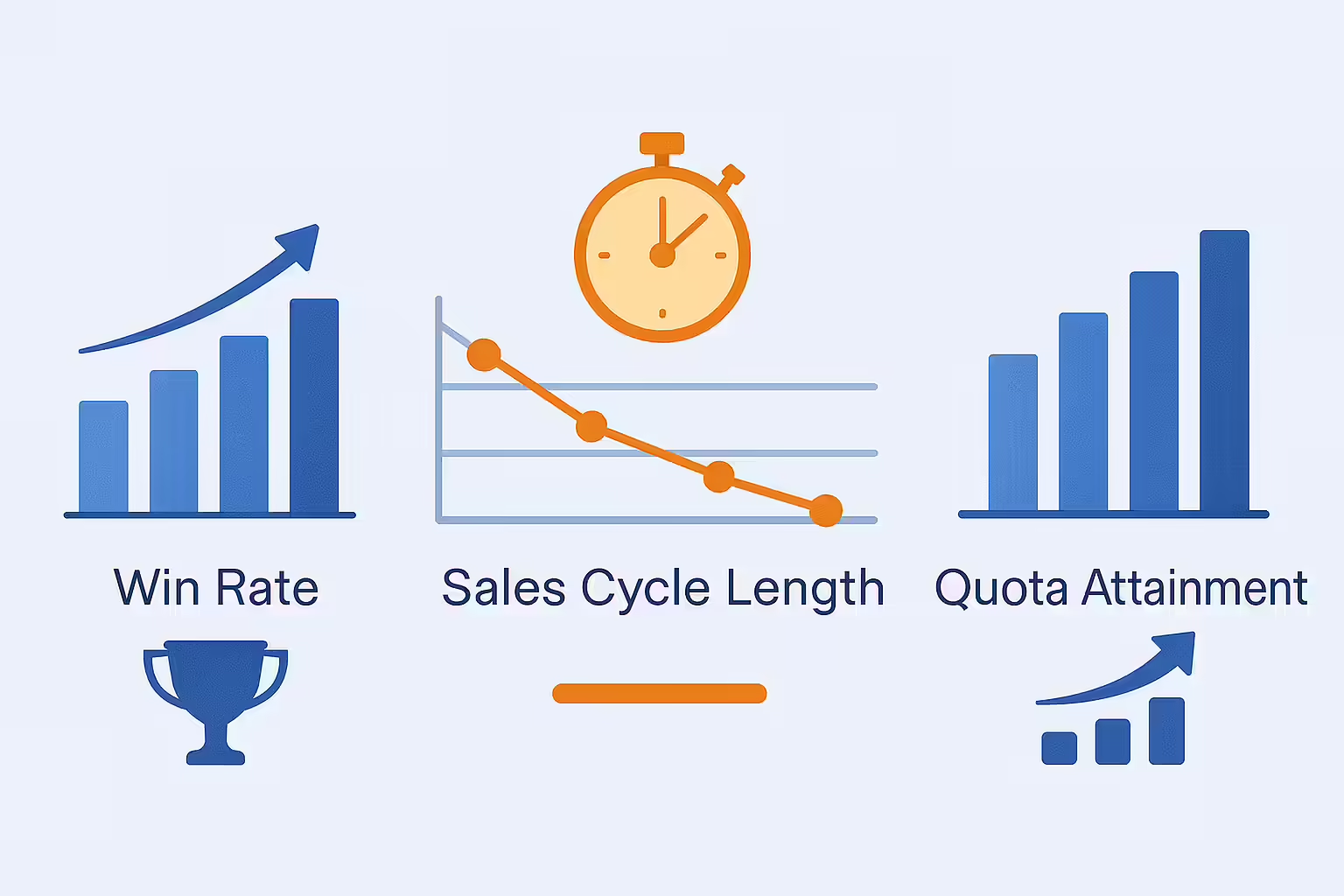
Key metrics for measuring Sales Enablement success include win rate, sales cycle length, and quota attainment
Before and After Sales Enablement

Organizations with effective sales enablement see dramatic improvements in ROI and onboarding efficiency
Here’s a breakdown of key sales enablement KPIs and why each one matters:
| KPI Name | Description | Why it Matters for Sales Enablement |
|---|---|---|
| Win Rate / Conversion Rate | Percentage of leads converted to customers. | Indicates how well the team is closing deals with enablement support. |
| Average Deal Size | Average value of closed deals. | Larger deals signal better value communication and sales execution. |
| Sales Content Adoption, Usage | How often reps use provided content. | High usage shows content relevance; low usage might indicate issues. |
| Tool Adoption | How well reps use sales tools and platforms. | High adoption = better productivity and ROI on tool investments. |
| Time to Productivity | Time it takes for new reps to make their first sale. | Measures onboarding effectiveness-faster ramp-up = quicker impact. |
| Sales Cycle Length | Time from lead to closed deal. | Shorter cycles reflect streamlined processes and rep effectiveness. |
| Quota Attainment | Percentage of reps hitting their sales goals. | High attainment shows enablement is equipping reps to succeed. |
| User Satisfaction | Reps’ satisfaction with enablement support and content. | Happy reps are more engaged, productive, and likely to stick around. |
| Sales Team Churn Rate | Rate of turnover in the sales team. | Lower churn often correlates with better support and onboarding. |
| Lead-to-Opportunity Conversion Rate | Percentage of leads moving to qualified opportunities. | Indicates effectiveness of early-stage enablement and rep qualification training. |
| Average Selling Price | Average revenue per deal. | A rising ASP suggests reps are selling more effectively with enablement backing. |
| Sales Productivity | Efficiency of reps’ daily work. | A key marker of how well enablement is helping reps focus on selling over admin work. |
| Customer Acquisition Cost (CAC) | Total cost to acquire a new customer. | Lower CAC = more efficient selling process and better ROI. |
| Customer Lifetime Value (CLV) | Revenue expected from each customer over time. | Higher CLV shows enablement is supporting customer retention and upsell. |
| Content Effectiveness | Revenue linked to specific content use. | Ties content directly to deals-shows which assets drive results. |
| Training Completion & Engagement | Completion rates and participation in training programs. | High engagement suggests training is practical and valued. |
| Sales Readiness | Reps’ perceived ability to effectively sell. | Captures how well enablement prepares reps for real-world conversations. |
Consistently tracking these KPIs helps your SEM and leadership understand what’s working, what’s not, and where to focus next.
The Tech Tools that Sales Enablement Managers Love
SEMs leverage a range of tools to boost team performance:
- CRM Systems like Salesforce, HubSpot, or Dynamics 365 keep customer data organized and easily accessible.
- Sales Enablement Platforms such as Highspot and Seismic offer training, content management, and analytics all in one.
- Sales Engagement Tools like Salesloft or Outreach streamline prospect communication.
- Conversation Intelligence Tools such as Gong or Chorus analyze sales calls to identify what’s working and what isn’t.
Career Path and Opportunities in Sales Enablement
Sales enablement is a growing field with lots of room to advance:
- Start as a Coordinator, move up to Manager, then Director, and eventually VP of Sales Enablement.
- Specialize in areas like training, content creation, sales operations, or technology.
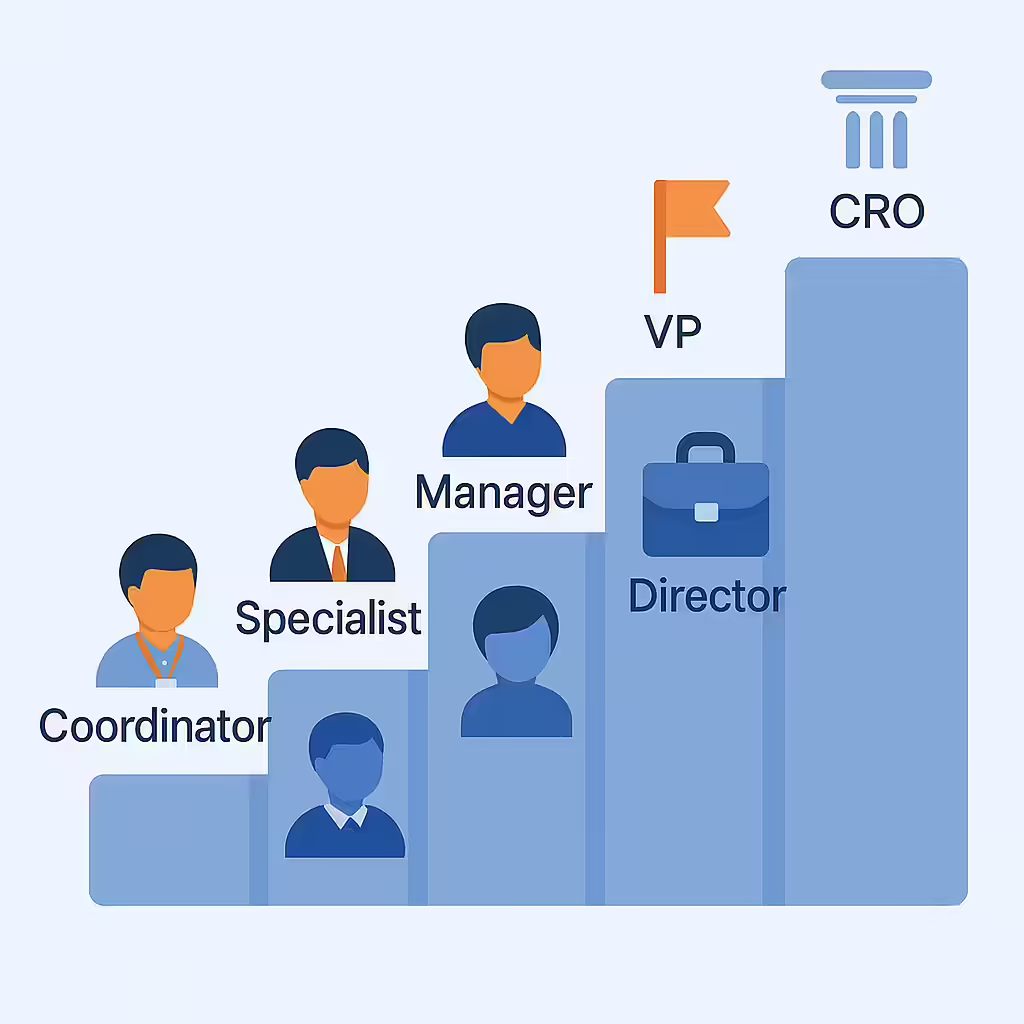
Career progression path in Sales Enablement from Coordinator to C-level positions
Common Challenges SEMs Face (and How to Overcome Them)
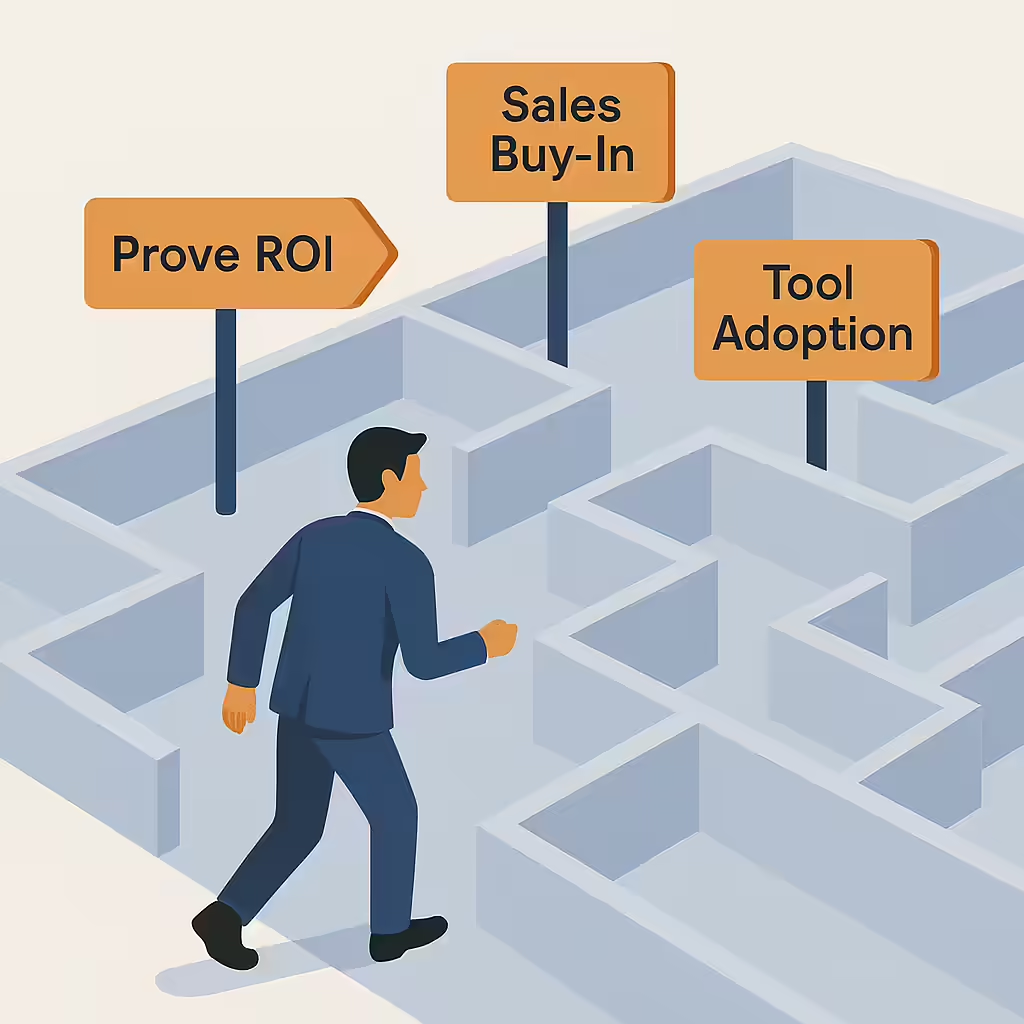
Sales Enablement Managers navigate challenges like proving ROI and driving tool adoption
- Aligning Sales and Marketing: Regular, clear communication and joint goal-setting can bridge this gap.
- Proving ROI: Track specific metrics like win rates, deal sizes, and onboarding speed to demonstrate clear value.
- Resistance to Change: Engaging your sales team early and clearly explaining how changes help them sell better can ease transitions.
Why Your Team Needs a Sales Enablement Manager
Imagine your top sales rep spending hours each week searching for the latest product info or creating their own sales decks. That’s valuable time wasted. A good SEM fixes that problem by creating a streamlined, effective sales environment-allowing your team to focus on selling.
In short, hiring a Sales Enablement Manager isn’t just another business expense. It’s an investment that helps your team sell smarter, grow faster, and hit your revenue goals consistently.



